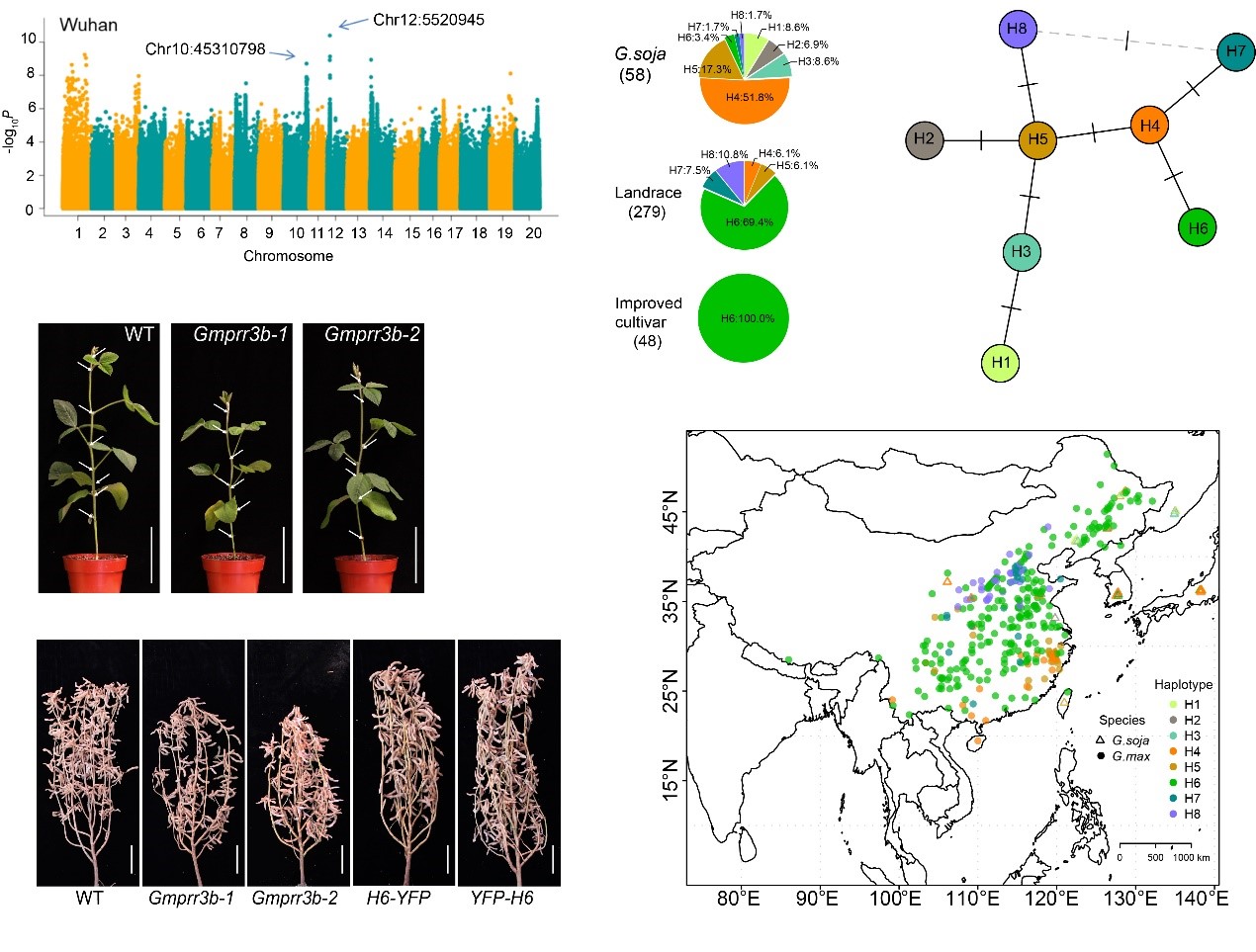A Domestication-Associated Gene GmPRR3b Regulates Circadian Clock and Flowering Time in Soybean
作者:Cong Li#, Ying-hui Li#, Yanfei Li#, Hongfeng Lu, Huilong Hong, Yu Tian, Hongyu Li, Tao Zhao, Xiaowei Zhou, Jun Liu, Xinan Zhou, Scott A Jackson, Bin Liu*, Li-juan Qiu*
影响因子:10.8
刊物名称:Molecular Plant
出版年份:January 2020
doi: 10.1016/j.molp.2020.01.014
https://www.cell.com/molecular-plant/fulltext/S1674-2052(20)30030-7
ABSTRACT
Improved soybean cultivars have been adapted to grow at a wide range of latitudes, enabling expansion of cultivation worldwide. However, the genetic basis for this broad adaptation is still not clear. Here we report the identification of GmPRR3b as a major flowering time regulatory gene that has been selected during domestication and genetic improvement for geographic expansion. Through genome-wide association study (GWAS) of a diverse landrace panel of soybean (comprised of 279 accessions), we identified 16 candidate quantitative loci associated with flowering time and maturity time. The strongest signal resides on the known flowering gene E2, verify the effectiveness of our approach. We detected strong association signals of a genomic region containing GmPRR3b with both flowering and maturity time. Haplotype analysis revealed that GmPRR3bH6 is the major form that has been utilized during recent breeding of modern cultivars. mRNA profiling analysis showed that GmPRR3bH6 displays a rhythmic and photoperiod-dependent expression that is preferentially induced under long day conditions. Overexpression of GmPRR3bH6 conferred increased main stem node number and high yield phenotypes, while knockout of GmPRR3bH6 by CRISPR-Cas9 technology retarded growth and delayed floral transition. GmPRR3bH6 appears to act as a transcriptional repressor of multiple predicted circadian clock genes, including GmCCA1a which directly upregulates J/GmELF3a to modulate flowering time. Taken together, the causal SNP (Chr12:5520945) likely endows GmPRR3bH6 a moderate but appropriate activity, which is associated with early flowering and vigorous growth traits preferentially selected for broad adaption in landraces and improved cultivars.





